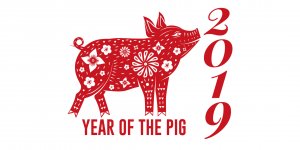
Last week, we dined again at Chef Jin Hua Li’s new business, Zhong Shan Restaurant on Taraval Street in San Francisco. Like his previous restaurant, he features Hakka cuisine. At our last meal at Zhong Shan, we tried many of the new dishes. At this feast we couldn’t resist ordering some of our old favorites from his Hakka Restaurant that he previously owned. Luckily, these dishes appear on the Zhong Shan menu, too.
We ordered the Steamed Pork Stomach with Chicken Soup and the Stuffed Duck in Lotus Leaf. Both of these labor intensive dishes require advance notice and are well worth planning ahead.


Steamed Pork Stomach with Chicken Soup 
For the soup, he stuffs a pork stomach with a whole chicken filled with chicken feet, white peppercorns, and dried longans. The football-shaped stomach steams for 5 to 6 hours to create a complex broth imbued with the chicken essence, a slight peppery spiciness, and a faint sweetness. The server brought the stomach and broth in a huge white tureen. She lifted out the stomach, cut it open with scissors, and cut the stomach and chicken into smaller pieces. The golden clear broth was ladled into small bowls to sip. Bite-sized pieces of chicken and stomach were offered to eat with a dip of soy sauce.

Lotus leaf encases stuffed duck 
Duck filled with Glutinous Rice Stuffing
In the Stuffed Duck in Lotus Leaf, glutinous rice laced with Chinese delicacies such as sausage, chestnuts, and dates fills a whole duck. The duck is browned, then wrapped in lotus leaves and steamed until the duck almost falls apart with succulent tenderness.

Braised Fried Tofu and Fish Fillet in Clay Pot 
Minced Pork and String Beans with Olive
We tried a couple of new dishes. Braised Fried Tofu and Fish Fillet in Clay Pot will join my list of favorites. The delicately sauced tofu and fish simply melted in our mouths.
We also liked the simple stir-fry of Minced Pork and String Beans with Olive. What was the olive? The olive looked like small bits of dark leaves. Checking on the internet I find that the Chinese olive vegetable is a dark condiment of cooked Chinese mustard greens, minced green olives, spices, soy, and oil. Use it as a seasoning to add deep earthy, savory flavor.

Chef Li sent us a new offering on his menu, Braised Spareribs. Not sure what the official name is, but we found the moist, tender, pork ribs cloaked in a dark, savory sauce to be a winner.

Chinese Bacon with Preserved Green 
House Special Basil Eggplant 
Hong Kong Style Spicy Clams 
Sauteed garlic pea sprouts
Must-have favorites rounded out our menu. Chef Li makes the best Chinese Bacon with Preserved Green. I love the House Special Basil Eggplant with its soft, seductive silkiness. The Hong Kong Spicy Clams are deep-fried to crust the exterior, then stir-fried with chiles and garlic. The bright green Sautéed Garlic Pea Sprouts brought a fresh note and balance to our feast. We all agreed, it was an incredible meal at a bargain price!
- Zhong Shan Restaurant
- Hakka Cuisine
- 2237 Taraval Street (between 32nd and 33rd Avenues)
- San Francisco, CA 94116
- (415) 592 8938






















